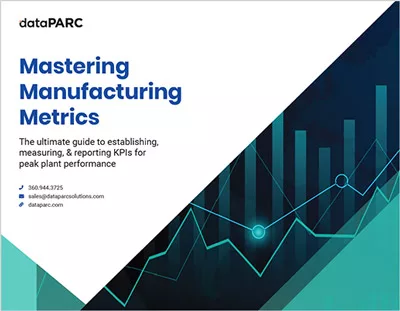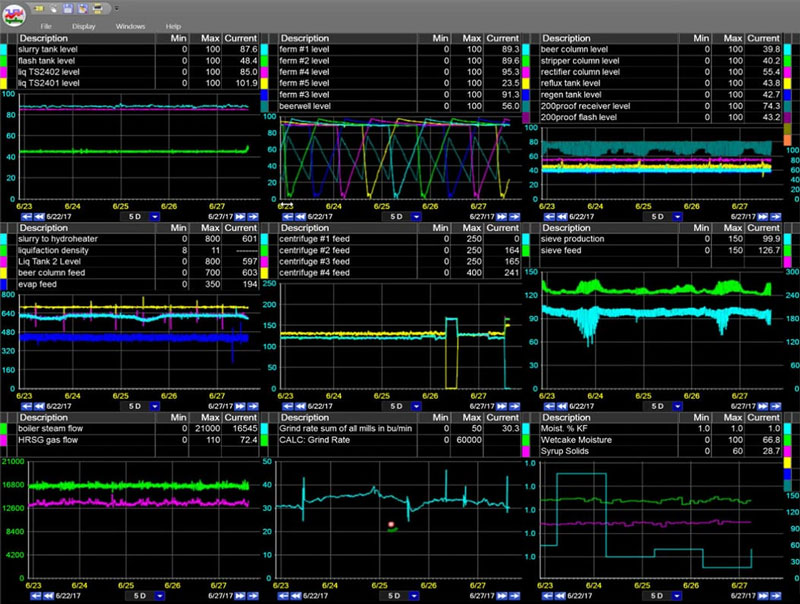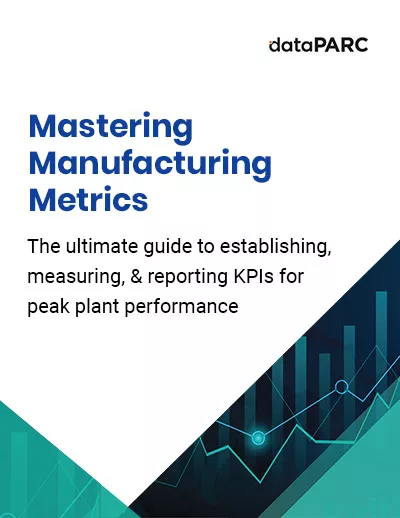As businesses continue to adjust with the demands of enviornmental data in ESG compliance, understanding the needs of environmental data management and advanced software becomes pivotal. In this post, we will explose how to leverage technologies, with a spotlight on how tools like dataPARC facilitate the intricate process of environmental data collection and reporting. Join us as we explore this crucial intersection, guiding businesses toward more sustainable and responsible practices.
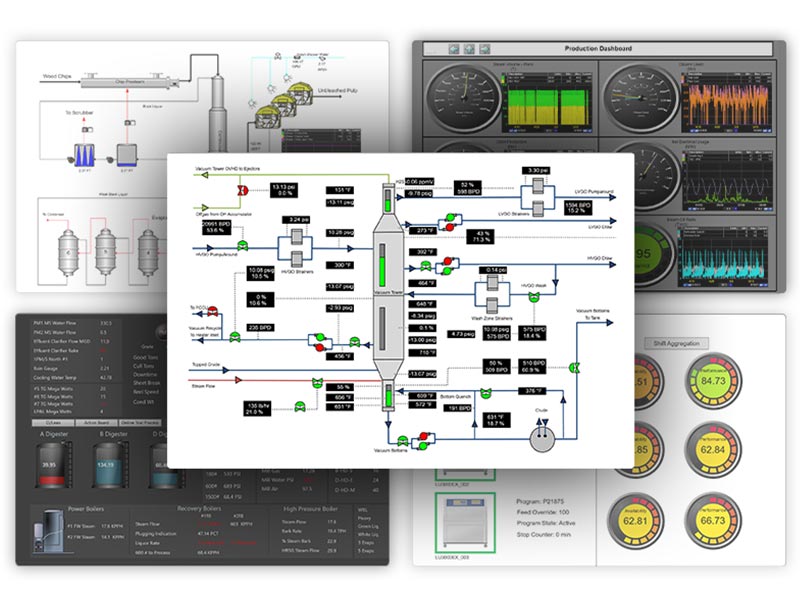
Build Real-Time Dashboards & Displays for Effective Process Monitoring with dataPARC
The Importance of Environmental Data in ESG Compliance
Environmental, Social, and Governance (ESG) compliance has become a crucial metric for businesses aiming to demonstrate their commitment to sustainability and responsible corporate practices. Among the three pillars of ESG, environmental factors take center stage, focusing on how a company’s operations impact the planet. The collection and management of environmental data plays a pivotal role in gauging and improving sustainability efforts.
Significance of Environmental Data in ESG Framework
When discussing ESG compliance, environmental data serves as the foundation upon which a company’s sustainability initiatives are built. It encompasses a broad spectrum of metrics that quantifies a company’s environmental footprint and resource management. These metrics include, but are not limited to, carbon emissions, water usage, waste management, and energy consumption.
Carbon Emissions:
The measurement of greenhouse gas emissions, like CO2 and methane, is critical in assessing a company’s contribution to climate change.
Water Usage:
Monitoring water consumption and its sources is essential for responsible water stewardship.
Waste Management:
Tracking waste generation, recycling rates, and hazardous waste disposal ensures responsible waste management practices.
Energy Consumption:
Measuring energy use, renewable energy adoption, and energy efficiency demonstrates a company’s commitment to reducing its carbon footprint.
Contribution to Sustainability Efforts
Accurate and comprehensive environmental data is more than just a compliance requirement; it’s a strategic asset that drives sustainability efforts. When an organization gathers precise data on its environmental impact, it gains insights into areas where it can reduce resource consumption, minimize waste, and lower emissions.
By having a clear understanding of its environmental performance, a company can identify opportunities for operational efficiency, cost reduction, and risk mitigation. Moreover, transparent environmental reporting not only fosters trust among stakeholders but also enables businesses to align with global sustainability goals like the United Nations’ Sustainable Development Goals (SDGs).
In conclusion, environmental data is the cornerstone of ESG compliance, providing the metrics and insights necessary for organizations to evaluate, improve, and communicate their commitment to environmental sustainability. As we continue, we will explore how leveraging software solutions can streamline the collection, management, and reporting of environmental data, ultimately enhancing a company’s ESG compliance efforts.
Challenges in Collecting Environmental Data Manually
In the quest for accurate and comprehensive environmental data, many organizations have historically relied on manual data collection methods. However, these methods come with a host of challenges and limitations that can hinder ESG compliance efforts.
Difficulties and Limitations of Manual Data Collection
Manual data collection methods, such as spreadsheets, paper records, and manual surveys, present several significant challenges:
Data Fragmentation:
Environmental data often resides in disparate sources and formats, making it challenging to consolidate and analyze effectively.
Data Silos:
Different departments within an organization may collect data independently, leading to isolated data silos that hinder cross-functional insights.
Limited Scalability:
As an organization grows or its environmental monitoring requirements evolve, manual data collection processes may struggle to scale effectively.
Risks of Human Error and Inaccuracies
Manual data collection is inherently susceptible to human error. Typos, miscalculations, or misinterpretations can lead to inaccurate data. Additionally, human biases or inconsistencies in data recording can skew results. These inaccuracies not only compromise the integrity of ESG reports but also pose reputational and compliance risks.
Time and Resource Constraints
Collecting environmental data manually is a labor-intensive process that consumes valuable time and resources. Employees spend countless hours inputting, verifying, and reconciling data. This manual effort can detract from core business activities and divert resources away from strategic initiatives.
Furthermore, the manual nature of data collection may result in delays in reporting. Timely access to environmental data is crucial for proactive decision-making and meeting reporting deadlines, especially when addressing incidents or emerging regulatory requirements.
In the following sections of this blog, we will explore how modern software solutions can alleviate these challenges and transform environmental data collection from a laborious and error-prone process into an efficient and accurate endeavor.
Role of Software in Environmental Data Collection
In the digital age, organizations are increasingly turning to specialized Environmental Management Systems (EMS) and ESG software to revolutionize their environmental data collection processes. These software solutions play a pivotal role in enhancing accuracy, efficiency, and comprehensiveness.
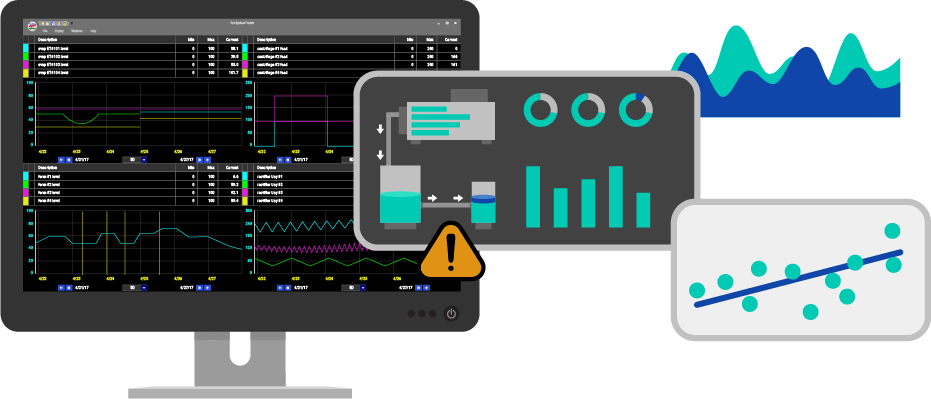
EMS software can combine trends, alarms and more to be the central hub of the site data and environmental monitoring.
Streamlining Data Collection with EMS/ESG Software
Environmental data collection software, such as Environmental Management Systems (EMS) or dedicated ESG solutions, is designed to simplify and streamline the data collection process. Here’s how:
Centralized Data Repository:
These platforms provide a centralized repository for all environmental data, consolidating information from various sources and departments. This centralized approach eliminates data silos and facilitates holistic reporting.
Automated Data Capture:
EMS and ESG software can automate the collection of environmental data from a wide array of sensors, devices, and systems. This automation reduces the reliance on manual data entry and minimizes the risk of human error.
Real-Time Monitoring:
Many software solutions offer real-time monitoring capabilities, enabling organizations to continuously track and record environmental parameters. This real-time data empowers proactive decision-making and immediate responses to emerging issues.
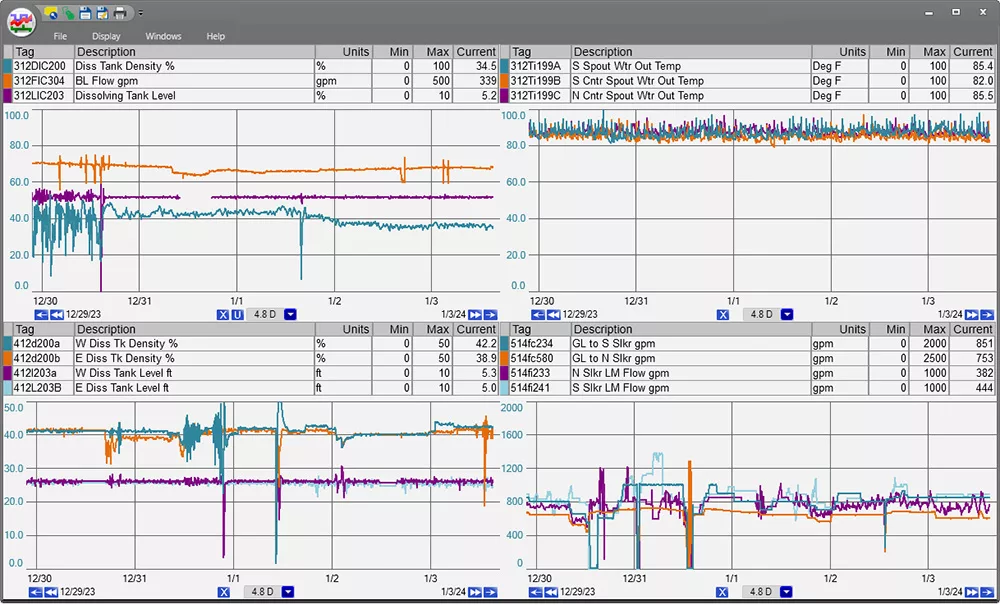
PARCview’s user-friendly multi-trend enable users to see data in real-time, enabling sites to track environmental data and see trends of of high usage or reportable events before they occur.
Advantages of Centralizing Environmental Data
Centralization of environmental data within software platforms brings several advantages:
Data Accuracy:
Automated data capture reduces the potential for errors associated with manual data entry and enhances data accuracy.
Comprehensiveness:
Environmental data collected through software solutions can encompass a broader range of parameters, including carbon emissions, water usage, waste management, and energy consumption.
Efficiency:
The automation of data collection processes frees up human resources, allowing employees to focus on higher-value tasks rather than data entry.
Timeliness:
Real-time data monitoring ensures that organizations have access to up-to-the-minute information, which is critical for timely decision-making and compliance reporting.
In the upcoming sections, we will delve deeper into the specific functionalities of EMS and ESG software, highlighting how they address the challenges posed by manual data collection methods and contribute to a more sustainable and ESG-compliant future.
Benefits of Using ESG Compliance Software
As organizations increasingly recognize the importance of Environmental, Social, and Governance (ESG) compliance in shaping their sustainability strategies and investor relations, the role of dedicated ESG compliance software becomes paramount. Here, we delve into the numerous advantages of leveraging software solutions for ESG compliance:
Enhanced Data Accuracy, Increased Efficiency
One of the foremost advantages of ESG compliance software is its ability to ensure data accuracy. By automating data collection and reducing manual input, the likelihood of errors or discrepancies is significantly minimized. This precision is crucial for reliable ESG reporting and investor trust.
ESG compliance software streamlines the data collection process, saving valuable time and resources. Manual data gathering is often labor-intensive and prone to delays, whereas software automates data retrieval, allowing organizations to focus on analysis and decision-making rather than data entry.
Real-Time Monitoring, Advanced Data Analysis
ESG compliance software goes beyond data collection; it empowers organizations with advanced analytics capabilities. By leveraging data analysis tools, organizations can gain deeper insights into their environmental performance. This includes identifying trends, patterns, and areas for improvement, which can inform strategic decision-making.
Many ESG compliance software solutions offer real-time monitoring of environmental data. This feature allows organizations to track their performance continuously, react promptly to anomalies, and make data-driven decisions in response to changing conditions.
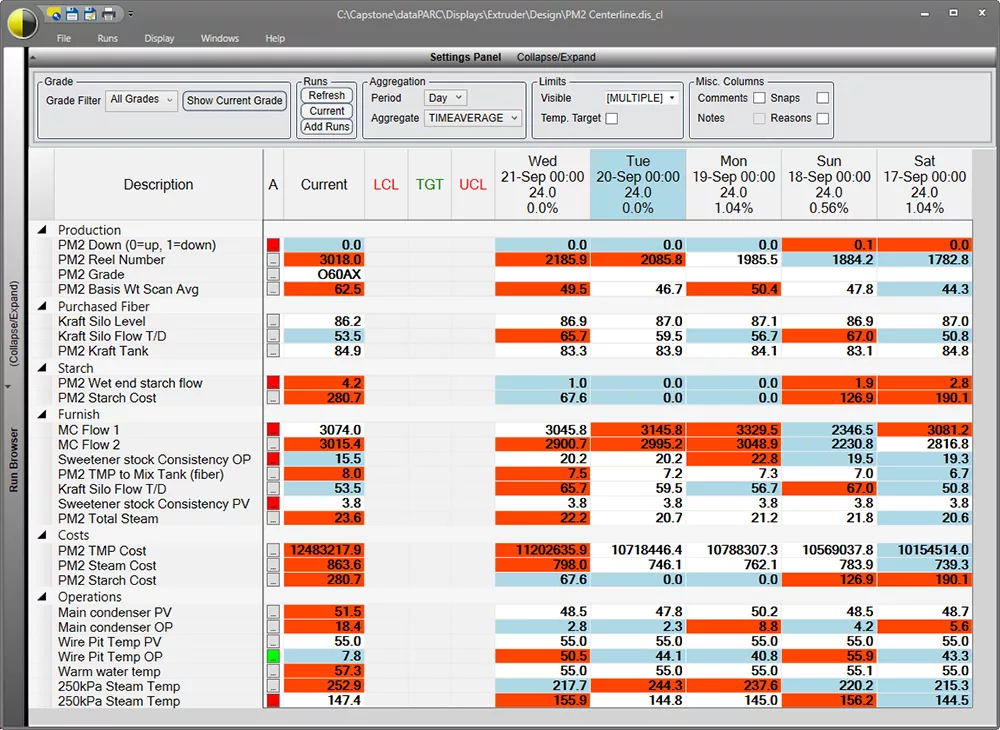
PARCview’s Centerline display assists users in running operations consistantly from shift to shift, day to day or run to run and can help spot any variables that may be out of their normal range. The centerline display is a unique display to dataPARC.
Data Transparency and Targeted Sustainability Strategies
Software platforms offer a centralized repository for all environmental data, making it easily accessible and transparent to stakeholders. This transparency fosters trust among investors, regulators, and the public, as they can readily access and verify the data supporting an organization’s sustainability claims.
Software enables organizations to pinpoint areas where sustainability efforts can have the most significant impact. By identifying specific environmental metrics that require improvement, organizations can tailor their sustainability strategies to address these areas effectively.
Benchmarking and Comparison, Regulatory Compliance, Demonstrated Commitment
Software facilitates benchmarking against industry peers and competitors. Organizations can measure their ESG performance against similar entities, gaining insights into where they stand relative to others in their sector. This benchmarking can drive healthy competition and promote best practices.
ESG compliance software can help organizations stay in line with evolving ESG regulations and reporting standards. These solutions often incorporate updates and adjustments to ensure that organizations remain compliant with the latest requirements.
By implementing ESG compliance software, organizations demonstrate their commitment to sustainability and responsible business practices. This commitment can enhance their reputation, attract socially responsible investors, and differentiate them in the marketplace.
In summary, ESG compliance software plays a pivotal role in helping organizations navigate the complexities of sustainability reporting and compliance. From data accuracy and efficiency gains to advanced analysis and regulatory alignment, these solutions offer an array of benefits that drive positive environmental impact and contribute to the broader ESG goals of organizations. In the next sections, we will delve deeper into how this software revolutionizes the collection and reporting of environmental data.

Build Real-Time Dashboards & Displays for Effective Process Monitoring with dataPARC
Top 5 Features to Look for in ESG Compliance Software
Selecting the right Environmental, Social, and Governance (ESG) compliance software is crucial for organizations striving to meet their sustainability goals and navigate the evolving landscape of ESG regulations. To make an informed choice, consider the following key features when evaluating ESG compliance software options:
1. Data Integration Capabilities
Effective ESG compliance software should seamlessly integrate with various data sources, including internal systems, external databases, IoT devices, and third-party data providers. This feature ensures that all relevant environmental data, such as emissions, energy usage, and waste management, can be efficiently collected and consolidated in one central platform.
Additionally, ensure that the software can align with widely recognized ESG frameworks and standards, such as the Global Reporting Initiative (GRI), the Task Force on Climate-Related Financial Disclosures (TCFD), and the Sustainability Accounting Standards Board (SASB). This alignment facilitates seamless reporting and benchmarking against industry peers.

dataPARC is a leading manufacturing data integration platform.
2. User-Interface: Reporting and Advanced Analytics
When searching for any new software, an intuitive and user-friendly interface is essential for ensuring that employees across your organization can effectively use the software. Look for software that prioritizes accessibility and ease of use, reducing the learning curve and promoting widespread adoption.
The user-friendly software should also offer analytics tools. These tools should enable your organization to derive meaningful insights from environmental data.
Advanced analytics can uncover trends, patterns, and areas for improvement, helping you make informed decisions and develop data-driven sustainability strategies.
Every organization has unique ESG goals and reporting requirements. Therefore, opt for software that allows you to create customized reports tailored to your specific needs.
Whether it’s generating compliance reports to be sent via email, live sustainability performance dashboards, or investor-focused disclosures, customizable reporting ensures flexibility and relevance.
3. Future-Proof: Scalability and Cloud-Based Accessibility
One way to future-proof your investment in an ESG software purchase is to think about the scalability of the software. As your organization grows or your ESG initiatives expand, your software should be able to scale accordingly.
Scalable ESG compliance software can accommodate increased data volumes, additional reporting requirements, and evolving sustainability goals without the need for extensive system overhauls.
Cloud-based accessibility is another area to consider for ESG compliance software and futureproofing. Cloud-based software offers the advantage of accessibility from anywhere, fostering collaboration among teams, even in remote locations. It also eliminates the need for on-premises infrastructure and maintenance.
4. Regulatory Compliance and Data Security
ESG regulations and reporting standards are continually evolving. To ensure long-term compliance, choose software that is adaptable to a variety of frameworks and requirements.
This adaptability will help your organization stay ahead of regulatory updates and avoid non-compliance risks.
ESG data can be sensitive. Security and privacy measures are paramount. The software should include features like data encryption, user access controls, and audit trails to safeguard environmental data from unauthorized access or breaches.
5. Customer Support and Updates
Comprehensive support, training, and regular updates is important to any software decision. This will drive the above topics of futureproofing, data security, employee training, and data integration.
ESG compliance software is most effective when it is continually improved to meet evolving sustainability challenges and regulatory changes. Find software where you have open communication with the supplier, which can be scalable but they can listen and work with you to adapt to changes as regulatory requirements continue to adjust.
By prioritizing these features, organizations can identify and implement ESG compliance software that not only ensures compliance but also facilitates the journey toward a more sustainable and responsible future. In the subsequent sections, we will explore how such software can revolutionize environmental data collection and reporting, driving meaningful progress in ESG initiatives.
dataPARC as ESG Software: A Case Study
In this section, we’ll take a closer look at how a forward-thinking paper company, successfully harnessed dataPARC, to revolutionize its environmental data management and reporting practices to automate monthly and annual reports sent to government agencies.
Challenges Faced
The mill encountered several significant challenges in its quest for environmental data management and compliance:
Daily Data Needs:
The company required daily access to its operational data, necessitating efficient data retrieval and visualization to support decision-making processes.
Monthly Reporting:
Internal stakeholders at the company needed monthly reports summarizing key environmental metrics for performance assessment and strategic planning.
Regulatory Compliance:
The company had obligations to upload specific environmental data to regulatory authorities, including the Provincial Ministry of Environment (EMS) and the Federal Environment and Climate Change Canada (RISS). Ensuring the accuracy and timely submission of this data was critical.
Implementing DataPARC ESG Software
To address these challenges, the mill opted to implement dataPARC, as their environmental software solution to streamline data collection, analysis, and reporting. The results were transformative:
Real-Time Data Access:
With dataPARC, the site gained real-time access to its operational data. PARCview, a component of the software, enabled users to view and interact with data in real time, enhancing operational visibility and decision-making.
Monthly Reporting Made Effortless:
dataPARC’s reporting capabilities simplified the generation of monthly reports. The software allowed the site to effortlessly compile and present key environmental metrics in a structured format, facilitating internal assessment and strategic planning.
Reports were created once, and then automated to be emailed on a monthly schedule to the necessary people. No more crunching numbers and compiling multiple reports from a variety of people.
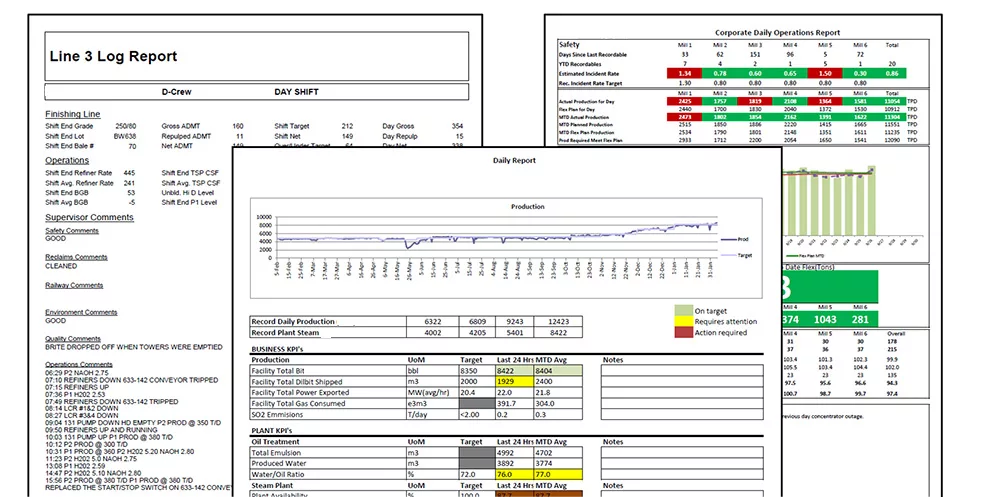
Sample dataPARC reports that can be generated and emailed out using the PARCview email scheduling service. Reports are saved as PDFs.
Regulatory Compliance Streamlined:
dataPARC significantly streamlined regulatory compliance processes, eliminating manual data entry by automating document generation and data uploads. This included creating essential .DAT and XML files for provincial and federal environmental agencies, and custom applications to automate data submissions, enhancing efficiency and accuracy.
Positive Impact on ESG Performance
The adoption of dataPARC had a profound impact on ESG performance and sustainability efforts:
Enhanced Data Accuracy:
With automated data collection and reporting, dataPARC significantly reduced the risk of errors and ensured data accuracy, bolstering the reliability of ESG reporting.
Efficiency Gains:
The site experienced substantial time and resource savings by automating its data management processes. The ability to access real-time data and generate reports promptly allowed for quicker decision-making and more proactive environmental management.
Seamless Regulatory Compliance:
dataPARC’s capabilities facilitated smooth compliance with regulatory authorities. The software’s automation features simplified the creation and submission of required data files and reports, reducing compliance-related burdens.
This example of dataPARC showcases the transformative power of ESG software in revolutionizing environmental data management. The positive outcomes, including enhanced data accuracy, efficiency gains, and streamlined regulatory compliance, exemplify the tangible benefits that ESG-focused organizations can achieve by leveraging specialized software solutions.
Conclusion
In this ever-changing aspect of ESG compliance businesses find themselves, the integration of advanced software solutions like dataPARC has proven to be necessary for businesses committed to sustainable and responsible practices. Through a practical case study, we’ve seen how dataPARC not only simplifies the complexities of environmental data management but also empowers companies to meet regulatory demands with precision and ease.
The transformative journey from manual data handling to automated, real-time ESG reporting underscores the critical role of technology in advancing sustainability goals. As organizations continue to navigate the evolving terrain of ESG compliance, embracing such innovative tools will be pivotal in driving efficiency, ensuring accuracy, and fostering a culture of transparency and accountability. The future of environmental stewardship lies in harnessing the power of software to elevate our collective commitment to a sustainable planet.

